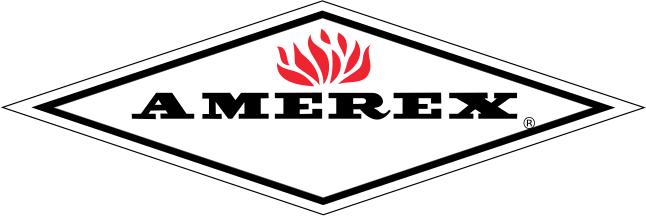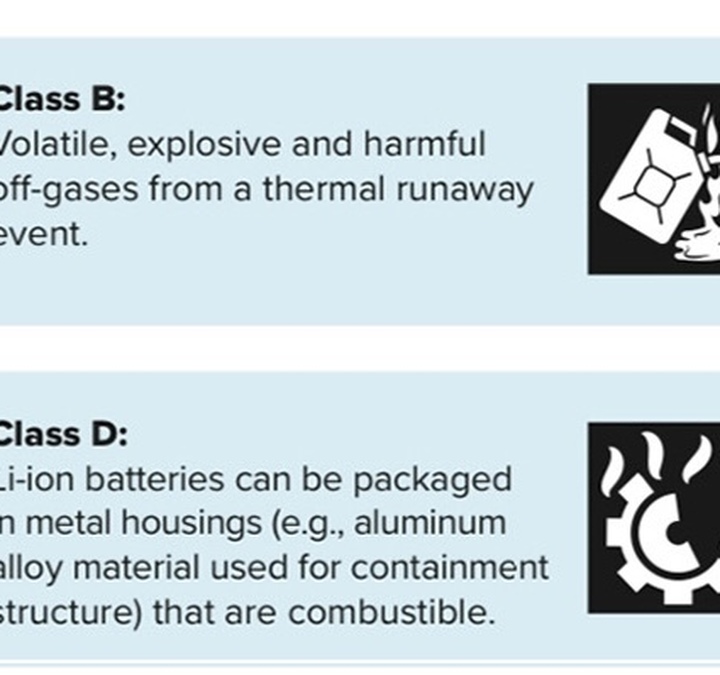There has been a great deal of resarch focused on lithium-ion battery fire extinguishers. As the use of lithium-ion batteries continues to grow, so does the need for effective fire safety measures. These batteries power our smartphones, laptops, electric vehicles and countless other devices. However, they pose unique fire hazards due to their high energy density and flammable electrolytes.
According to UL reporting, the incidents involved with lithium-ion battery fires have increased through the years. The NFPA has also put out a number of safety tips for charging and disposing of lithium-ion batteries. Currently, however, neither organization has put out a standard around lithium-ion battery fire extinguishers.
The Complexity of Lithium-Ion Battery Fires
Lithium-ion battery fires are notoriously unpredictable. When these batteries go into thermal runaway, they can release intense heat and toxic gases. The hazards associated with lithium-ion battery fires include:
- Class A Fires: Ordinary combustibles like wood, paper, and textiles.
- Class B Fires: Flammable liquids such as gasoline, oil, and alcohol.
- Class C Fires: Energized electrical equipment.
- Class D Fires: Combustible metals like lithium.
Learn more about types of fire here.
Lithium-ion battery fires pose significant risks due to their unique characteristics. Here are 5 facts to remember regarding these fires:
-
Thermal Runaway:
- When lithium-ion batteries overheat, they can experience a phenomenon called “thermal runaway.”
- This chemical reaction occurs due to internal faults (such as short circuits) or external damage.
- In extreme cases, it leads to the battery catching fire or exploding.
- Thermal runaway intensifies rapidly, making these fires particularly dangerous.
-
Intense and Long-Lasting Fires:
- Lithium-ion battery fires are not only intense but also long-lasting.
- They emit hazardous gases such as carbon monoxide, hydrogen fluoride, and hydrogen chloride1.
- When these fires occur in electric vehicles (EVs) or battery storage facilities, they can burn for days.
-
User Behavior and External Factors:
- Improper charging practices or physical damage can trigger thermal runaway.
- Solid-state batteries with a lithium metal anode (instead of graphite) can react violently when exposed to water.
- Understanding safe handling and storage practices is crucial.
-
Megapacks and Grid Stabilization:
- Large lithium-based batteries like Megapacks (designed by Tesla) serve as energy storage and grid stabilizers.
- A Megapack fire can be daunting due to its capacity (3 megawatt hours) and potential for extended burning.
-
Health Hazards:
- Lithium-ion battery fires release toxic fumes, including carbon monoxide and other harmful gases.
- Inhaling these fumes can be detrimental to health.
Real-World Solutions Needed
Third-party Nationally Recognized Test Laboratories (NRTLs) are currently investigating the various hazards associated with lithium-ion battery thermal runaway events. NRTLs will likely consider the classifications mentioned above as well as other factors such as battery size/capacities and safe distance for attacking a lithium-ion thermal runaway fire. In order to avoid injury to the firefighter,currently there are limited guidelines for extinguishing battery fires iwth a handheld fire extinguihser. While water-based agents may comply with the UL8 standard for class A fires, they do not address the dangers of fighting the B, C, or D fire hazards associated with lithium-ion battery fires.
Amerex Work
Finding solutions for lithium-ion battery fires is a high priority for Amerex. Our team has significant experience in developing real-world sloutions for the fire protection market. We are working with other industry experts and NRTLs to create unified performance criteria for effective products to be used for suppressing lithium-ion battery fires. Amerex experts serve on a variety of standards and fire code committees that are dedicated to addressing one of the biggest challenges facing our industry. We are committed to providing the highest quality safe solutions that meet the expectations of our distributors and the industry.
"Lithium-ion batteries have the potential to pose high risk to property and life safety," says Kendall Pate, who leads the Amerex product development team. "Having a diverse R&D team with the right skillsets allows us to create safety solutions for the evolving industry of energy storage."
Download our Information Sheet Here.
Download information on our EV Gas Detection Early Warning System here and view the video here.



